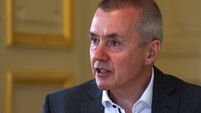House price increases are likely

Recently, a lot of attention has focused on issues such as the help-to-buy scheme, the altering of the Central Bank mortgage regulations, rent control and homelessness.
In Budget 2017, the Government outlined a scheme that will provide first-time buyers with a rebate of income tax paid over the previous four years of up to 5% of the purchase price of a new home, up to a maximum value of €400,000.
While the measure may boost prices, the Government is hoping that it will also provide some level of certainty to developers regarding housing demand, thereby boosting house building activity.
The much debated Central Bank regulations that were introduced back in early 2015 have also been amended. First-time buyers will now be able to apply for a 90% loan-to-value mortgage without a price limit. However, the 3.5 times loan-to-income ratio remains in place.
Meanwhile, the Government introduced a 4% annual cap on rent increases in Dublin and Cork City at the end of last year, with the potential for it to apply to other areas as well.
The key issue remains the shortfall in supply and there are signs of a pick-up in supply. Housing completions were up over 17% in the year to October compared to the same period in 2015.
Based on this run rate, completions should reach 15,000 units for 2016. Crucially, while the projected 15,000 completions for last year compares favourably to 2015’s figure of 12,660, it is still well short of the estimated 25,000 to 30,000 units required per annum to meet housing demand.
Based on current supply dynamics, it could be 2019, at the earliest, before new house building reaches anywhere near the required level on an annual basis.
The mismatch between supply and demand is evident across a broad range of indicators for the housing sector. The new CSO residential property price index, which now includes cash purchases as well as mortgage transactions, shows house prices rising by 7% in year-on-year terms in October.
House price inflation outside of Dublin remains higher than in the capital. At the same time, the rate of rent inflation is very high although there are tentative signs that the pace of increase may be slowing somewhat. The level of stock available to rent or buy also continues to fall.
According to the latest daft.ie data, the number of properties available to rent nationally fell below 4,000 last year from a peak of 27,000 back in 2009.
Likewise, the stock of properties for sale continues to decline, falling by 14% in December from year-earlier levels. There were fewer than 22,000 properties for sale across the country at the end of 2016, down from a peak of over 60,000.
The lack of supply of residential properties is also acting as a headwind to growth in the mortgage market. The shortage of housing is also giving rise to serious social problems, with growing numbers of homeless people and families being forced to live in unsuitable accommodation such as hotels.
Housing, then, is likely to remain the key domestic political issue in 2017.











